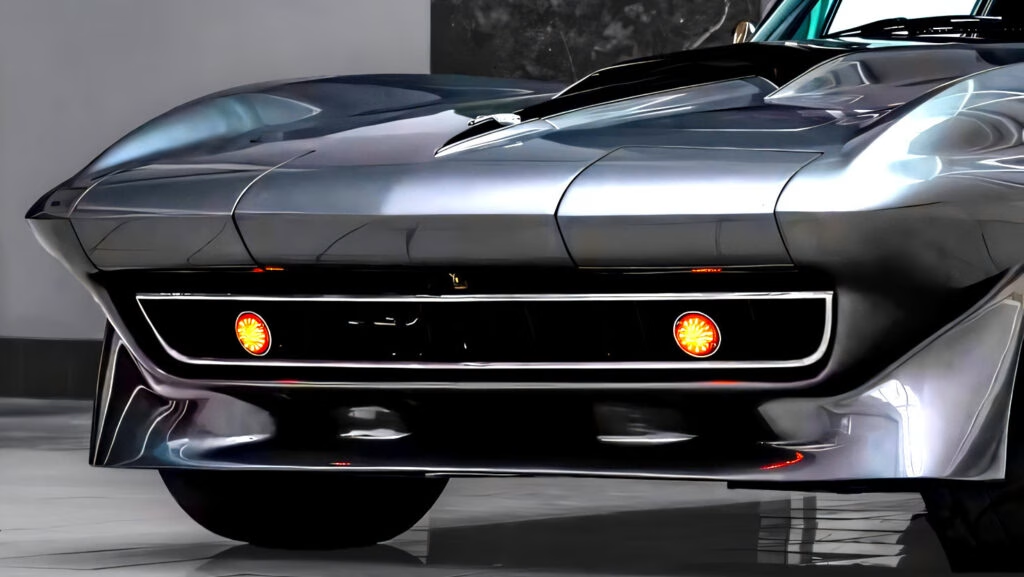Why Are Restomods Like This 1967 Corvette Sting Ray Turning Heads at Auctions?
There’s something about a classic Corvette that just pulls you in. Sure, the latest C8s are technical marvels—fast, sharp, and surprisingly affordable compared to their European rivals. But when you picture yourself opening the garage on a lazy Sunday, it’s the sculpted lines of a ’60s Sting Ray that really spark the imagination. That’s why restomods—classic cars reimagined with modern performance and comfort—are stealing the spotlight at high-profile auctions like Mecum’s Monterey event.
What Makes This 1967 Corvette Sting Ray Restomod Stand Out?
Let’s get specific. The car in question started life as a 1967 Corvette coupe, but it’s a far cry from stock. Under the hood sits a 432 cubic inch V8—about 7.1 liters—built with forged internals and aluminum heads, topped off with electronic fuel injection. Translation: it’s got the heart of a modern muscle car, not a museum piece. The five-speed manual transmission, Wilwood four-wheel disc brakes, and a Global West suspension with adjustable shocks mean this Sting Ray is ready for both backroad blasts and highway cruising.
But the upgrades aren’t just mechanical. Wider fenders, a Stinger hood, and shaved bumpers give the car a mean, purposeful stance. Inside, quilted leather sports seats and a Vintage Air climate system make it a genuinely comfortable place to spend time—no more sweating through your shirt or wrestling with unsupportive old seats.
Why Do Enthusiasts Choose Restomods Over Factory-Original Classics?
It’s a fair question. Purists might argue that modifying a classic Corvette is sacrilege. But let’s be honest: as beautiful as the original C2s are, they drive like cars from the 1960s. Sloppy steering, vague brakes, and just four gears can make even a short trip feel like a workout. For many, that’s part of the charm. For others, it’s a dealbreaker.
Restomods offer a best-of-both-worlds solution. You get the timeless looks and presence of a classic, but with the reliability, safety, and performance of a modern machine. According to a 2023 Hagerty report, demand for restomods has surged by over 30% in the last five years, with buyers citing drivability and comfort as top priorities. It’s not just about nostalgia—it’s about actually using and enjoying these cars on today’s roads.
How Does This Restomod Compare to Modern Corvettes Like the C8 Z06 or ZR1?
Let’s not kid ourselves: even with all the upgrades, this ’67 restomod won’t outrun a new Z06 or ZR1X on a track. The latest Corvettes are engineering showcases, capable of embarrassing supercars that cost twice as much. But that’s not really the point.
What the restomod offers is a different kind of thrill. It’s about the visceral connection—rowing your own gears, hearing that big V8 snarl, and knowing you’re piloting a one-of-a-kind machine. Plus, there’s the undeniable cool factor. Pull up to a cars and coffee event in a pristine C8, and you’ll get nods. Arrive in a tastefully built restomod, and you’ll have a crowd.
What Should You Look for If You’re Considering a Restomod Purchase?
If you’re tempted to jump into the restomod world, do your homework. Not all builds are created equal. Look for cars with documented upgrades from reputable shops, and prioritize quality over flash. Modern fuel injection, upgraded brakes, and improved suspension are must-haves if you plan to drive the car regularly. Creature comforts like air conditioning and supportive seats can make a world of difference, especially if you live somewhere with real summers.
Also, consider resale value. While originality still commands a premium in some circles, the market for well-executed restomods is growing fast. According to Classic.com, restomodded Corvettes have seen a 20% increase in average sale price since 2020. The key is tasteful, reversible modifications and top-notch craftsmanship.
What’s the Real Appeal of a Classic Corvette Restomod?
At the end of the day, it’s about emotion. A restomod like this 1967 Sting Ray isn’t just a car—it’s a statement. It says you appreciate history, but you’re not afraid to make it your own. You want the soul of the ’60s with the confidence to drive anywhere, anytime.
The big takeaway? Building or buying a restomod isn’t about perfection—it’s about smarter adjustments. Start with one change this week, and you’ll likely spot the difference by month’s end. Whether it’s a new set of brakes, a modern stereo, or just a more comfortable seat, these tweaks can transform a classic from a garage queen into a true daily driver. And that’s where the magic really happens.

